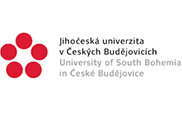Bioreactor allows automated long-term culturing of stem cells
Date: 6.1.2025
Human induced pluripotent stem cells (hiPSCs) are considered a promising tool in medicine, with the potential to unlock treatments for many health conditions such as neurodegenerative diseases and disorders. However, producing large amounts of hiPSCs remains a challenge.
 Researchers from the Fraunhofer Translational Center for Regenerative Therapies TLC-RT at the Fraunhofer Institute for Silicate Research ISC have now developed a bioreactor that can be used for automated long-term culturing of hiPSCs.
Researchers from the Fraunhofer Translational Center for Regenerative Therapies TLC-RT at the Fraunhofer Institute for Silicate Research ISC have now developed a bioreactor that can be used for automated long-term culturing of hiPSCs.
Human induced pluripotent stem cells (hiPSCs) hold great potential for the development of cell therapies and drugs and for disease research. HiPSCs are very similar to embryonic stem cells, but they are cultured and reprogrammed in a lab from adult cells taken from the connective tissue of adult subjects.
The advantage is that pluripotent stem cells have the potential to produce almost any type of cell or tissue that the body requires for self-repair purposes. It is also possible to perform patient-specific tests of potential active ingredients directly on the cells affected by a certain health condition.
To meet the rising demand for hiPSCs and allow for standardized production in larger volumes, a team of researchers from Fraunhofer ISC in Würzburg has developed a dynamic incubator and suspension bioreactor that can be used for long-term culturing of hiPSCs as part of their work on the SUSI (short for "Suspension Incubator") project. It offers optimum conditions, such as a temperature of 37°C and an atmosphere saturated with 5% CO2, both of which are necessary to culture the cells.
Zdroj obrázku: Fraunhofer ISC.























